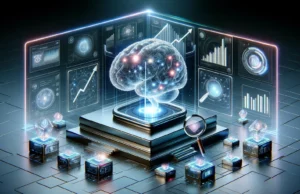A time capsule of human expression
Graham-Cumming is no stranger to tech preservation efforts. He’s a British software engineer and writer best known for creating POPFile, an open source email spam filtering program, and for successfully petitioning the UK government to apologize for its persecution of codebreaker Alan Turing—an apology that Prime Minister Gordon Brown issued in 2009.
As it turns out, his pre-AI website isn’t new, but it has languished unannounced until now. “I created it back in March 2023 as a clearinghouse for online resources that hadn’t been contaminated with AI-generated content,” he wrote on his blog.
The website points to several major archives of pre-AI content, including a Wikipedia dump from August 2022 (before ChatGPT’s November 2022 release), Project Gutenberg’s collection of public domain books, the Library of Congress photo archive, and GitHub’s Arctic Code Vault—a snapshot of open source code buried in a former coal mine near the North Pole in February 2020. The wordfreq project appears on the list as well, flash-frozen from a time before AI contamination made its methodology untenable.
The site accepts submissions of other pre-AI content sources through its Tumblr page. Graham-Cumming emphasizes that the project aims to document human creativity from before the AI era, not to make a statement against AI itself. As atmospheric nuclear testing ended and background radiation returned to natural levels, low-background steel eventually became unnecessary for most uses. Whether pre-AI content will follow a similar trajectory remains a question.
Still, it feels reasonable to protect sources of human creativity now, including archival ones, because these repositories may become useful in ways that few appreciate at the moment. For example, in 2020, I proposed creating a so-called “cryptographic ark”—a timestamped archive of pre-AI media that future historians could verify as authentic, collected before my then-arbitrary cutoff date of January 1, 2022. AI slop pollutes more than the current discourse—it could cloud the historical record as well.
For now, lowbackgroundsteel.ai stands as a modest catalog of human expression from what may someday be seen as the last pre-AI era. It’s a digital archaeology project marking the boundary between human-generated and hybrid human-AI cultures. In an age where distinguishing between human and machine output grows increasingly difficult, these archives may prove valuable for understanding how human communication evolved before AI entered the chat.









